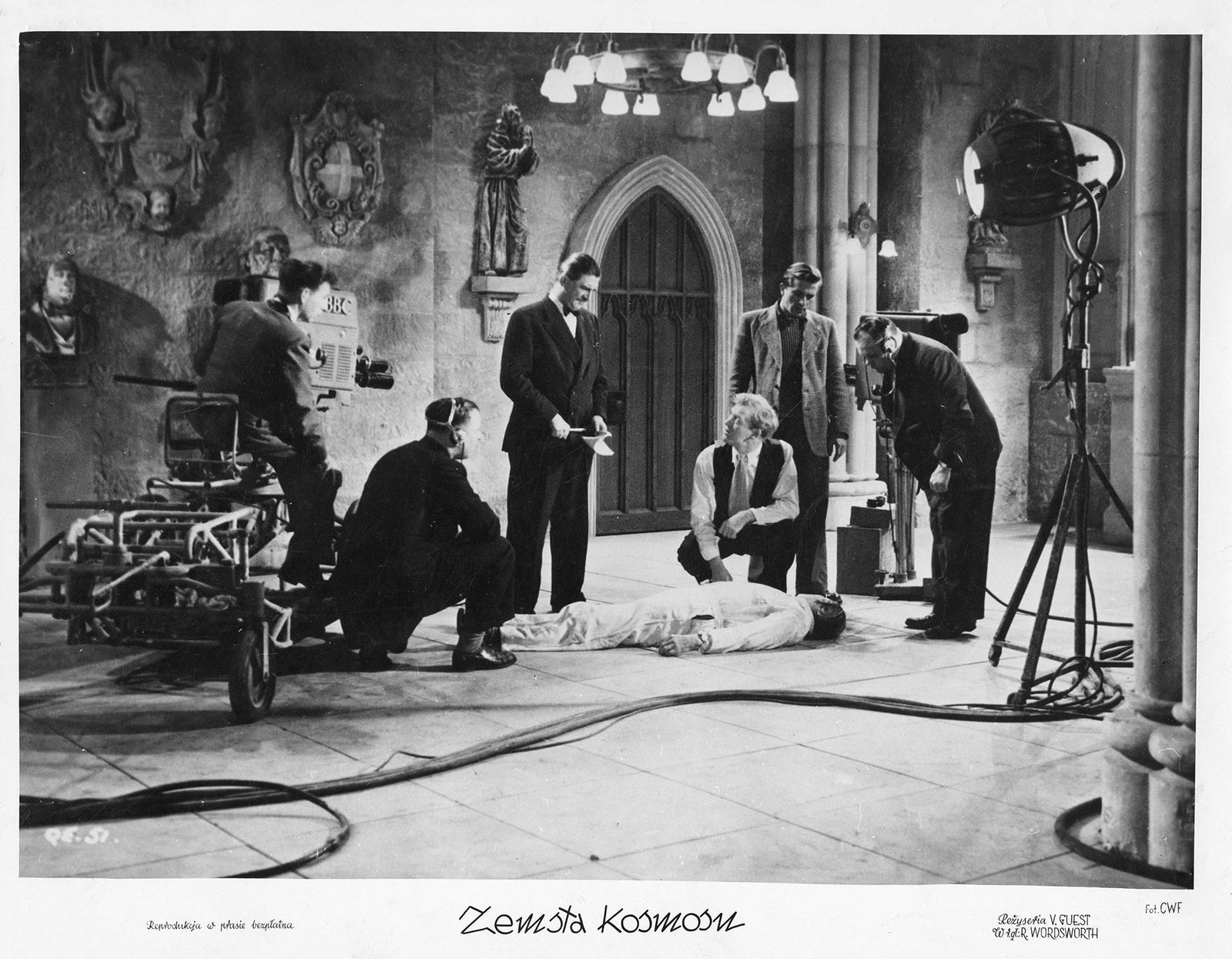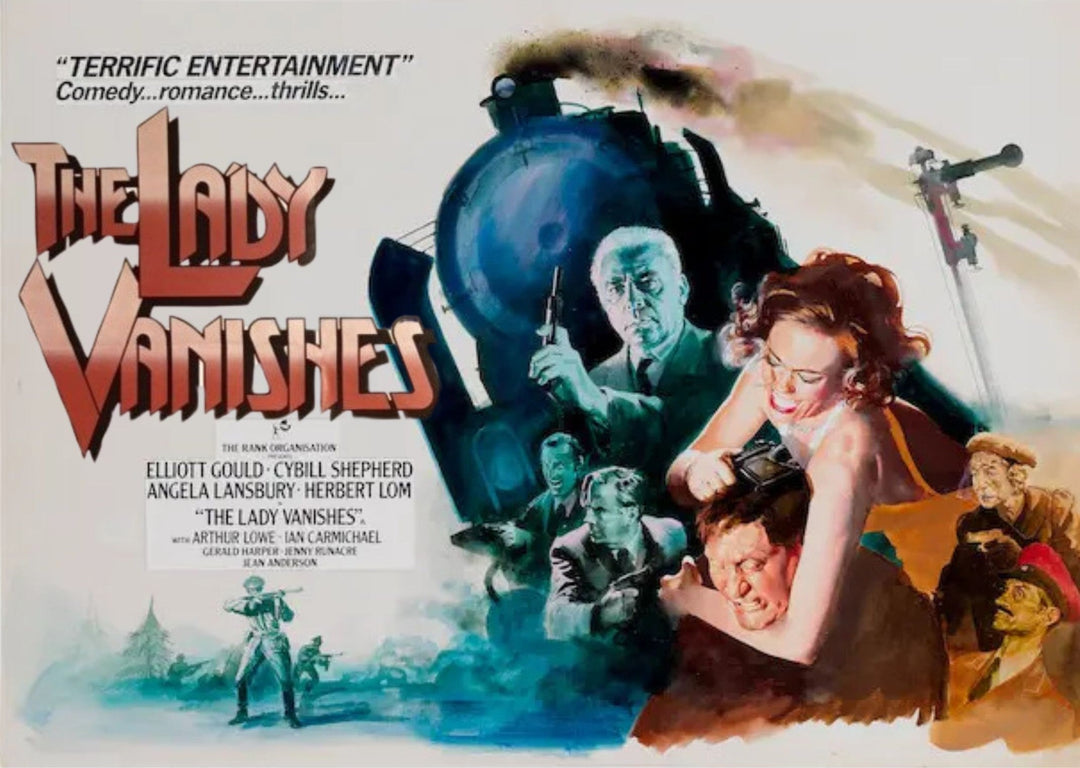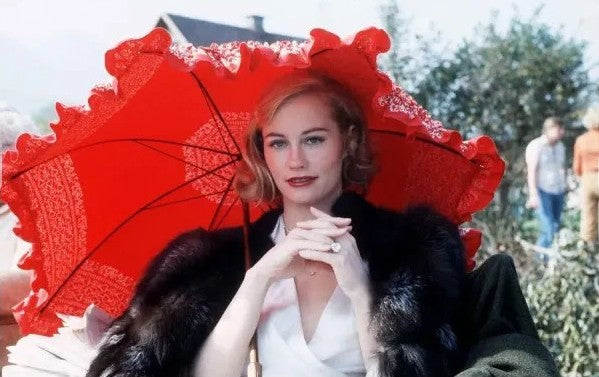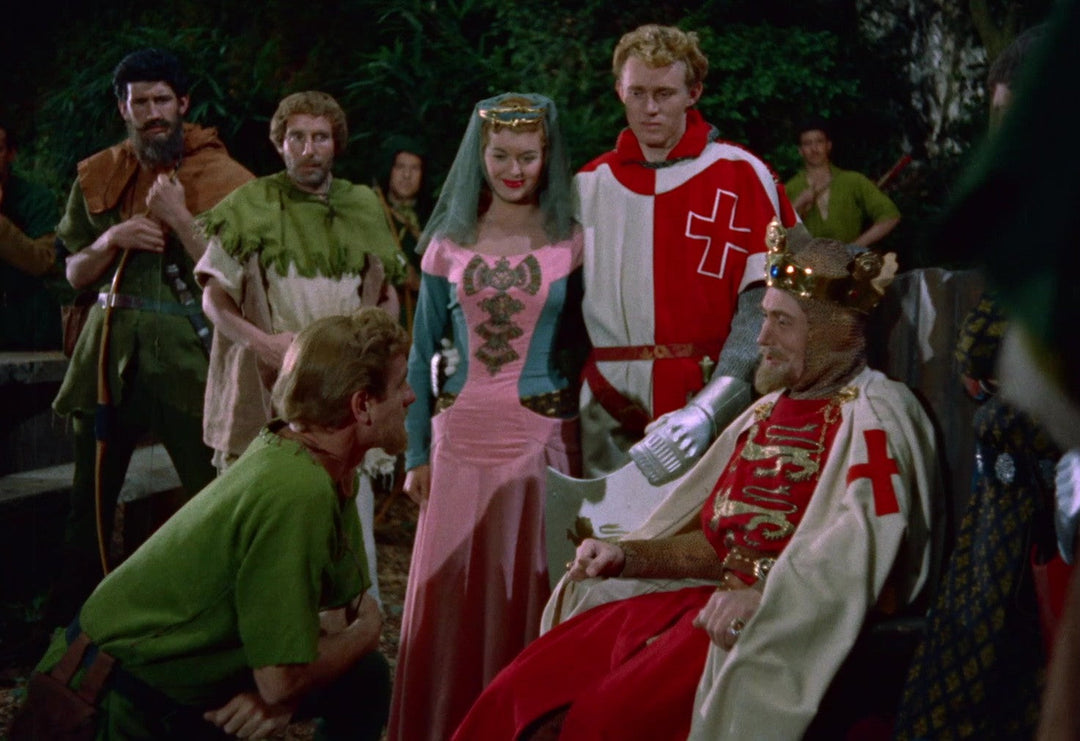Quatermass and the Hit: The British Nightmare that became a Global Smash

In 2005, after accepting the lead role in Doctor Who, David Tennant was asked why he’d wanted to play the Doctor. ‘There were a few reasons, really,’ he replied, saying he knew what the show in question, ‘…stood for in terms of the legacy of science fiction on television, and even drama on television.’ Expanding on its earliest days, back in the era of black and white telly, he called it, ‘one of the most ambitious things of its time… it changed the way that television drama was viewed, and certainly the way that television science fiction was viewed. So I wanted to be part of that!’
The punchline is, of course, he wasn’t talking about Doctor Who. He was being asked about his role as Dr. Gordon Briscoe and was enthusing about the original, 1953 version of The Quatermass Experiment, having just taken part in the 2005 remake. Now, David Tennant is a man who knows a thing or ten about making sci-fi accessible and successful. But it’s telling that when he spoke about Quatermass, he focused on its legacy. The reaction it engendered. Perhaps that’s appropriate. It was The Quatermass Experiment, after all, and the point of any experiment is to analyse its outcome.
The short-term and long-term impact of the seminal 6-part serial is relatively well-known. Tales of pubs emptying and streets becoming deserted before the start of each new episode have become as familiar as campfire stories. The production is now deemed so significant that its ramifications are covered in media courses. And although he remains relatively obscure in terms of general recognition, amongst fans of classic TV and anyone serious about good drama, Nigel Kneale, who created Quatermass, is regarded as a pioneer. As Mark Gatiss pointed out, ‘[Kneale] is amongst the greats - he is absolutely as important as Dennis Potter, as David Mercer, as Alan Bleasdale, as Alan Bennett, but I think because of a strange snobbery about fantasy or sci-fi, it’s never quite been [seen] that way.’

Quatermass (Regniald Tate - left) finds himself in a race against time at the crash site.
But what about the episodes themselves? Why did they apparently have such a huge and lasting effect on their audience?
On one hand - deep breath - there wasn’t a lot of competition in 1953. At the start of that year, television as a mass medium was still waiting to take-off, and the event that triggered its dominance was undoubtedly the June coronation of Queen Elizabeth II. The first event of major significance to be broadcast live, the sheer power of that immediacy was new and extraordinary.
In the UK, the number of TV licences rose from 763,000 in 1951, to 3.2 million in 1954, with the prospect of the coronation enticing many soon-to-be converts to rent or buy televisions. The ceremony achieved ratings of well over 10 million, with swathes of Brits who were sans set flocking to friends’ houses to enjoy the big event. It felt less ‘appointment to view’ and more ‘necessity to experience’.
The following day the Times newspaper summed up the feeling of sensation that the televised proceedings evoked. ‘At first it was difficult to grasp the fact that what one saw was not a news film but historic events unfolding even as one watched.’

Although Hammer had used several radio programmes as source material for their earlier films, when the studio adapted The Quatermass Experiment for the big screen it became their first feature based on a television show, a sign of the medium’s growing significance.
Television may have been around in one form or another since the mid-20s, but in terms of impact programming, the coronation was its crowning glory. TV ‘for the masses’ had arrived. The medium had acquired a pervasiveness. It had brought the nation together for the start of a new Elizabethan era, and under its stewardship, more moments of defining, shared experience felt inevitable.
Having said that, a few weeks later, on 18 July, 1953, at 8:10pm, the BBC broadcast an Interlude that comprised an image of James Tissot’s oil painting, Holyday, also known as The Picnic, painted in 1876. Later that evening, at approximately 8.50pm, viewers were treated to Journey to Adventure, a programme depicting wildlife in Africa, culled from material shot by the English naturalist, Cherry Kearton, between - wait for it - 1903 and the 1920s.
Pretty much anything sandwiched between those two bang-up-to-date productions would have been felt fresh and stirring. But the fact it was an original drama about dangerous breakthroughs in space travel, rockets crashlanding in London, missing astronauts, a terrified wife and a scientist battling to save the lives of his team members, made it more than stirring. It was seismic.
![Mark Gatiss said, ‘He [Kneale] can really lay claim to having created popular television with Quatermass - there was nothing like it before, and after it everything changed.’](https://cdn.shopify.com/s/files/1/0840/1669/3546/files/the-quatermass-experiment-blog-04_1024x1024.jpg?v=1746088790)
Mark Gatiss said, ‘He [Kneale] can really lay claim to having created popular television with Quatermass - there was nothing like it before, and after it everything changed.’
The first episode opened with titles played out over the ominous, urgent strains of Holst’s Mars, the Bringer of War, with a line announcing The Quatermass Experiment was ‘A Thriller for Television’. 30 minutes later it was clear they hadn’t been joking. Thriller was right. And crucially, Kneale wrote the serial specifically for the medium as it had become. This was no stage play captured on camera, or plodding piece of documentary, still grey in the shadow of John Reith. It was bold and fast, ambitious and loaded with jeopardy. Multi-camera and multi-faceted, a confident production for this brave new world.
The opening sequence quickly sets the scene, relating how ‘the first manned rocket in the history of the world’ launched in Western Australia and blazed into space. The voice-over narration is delivered in the present tense, making it feel current and developing. A story of now. The accompanying images are from the rocket’s point of view, showing our planet as a distant world. But within 50 seconds we’re back to Earth with a bump, cutting to Ground Control for ‘The British Experimental Rocket Group’ with words gently delivered, as if spoken by a newsreader: ‘When it is 14 hundred miles up, all contact with the rocket is suddenly lost…’
The plot races along from this point onwards, a sign of Kneale’s mastery and director Rudolph Cartier’s genius.

André Morell (left) who was approached to star as the first Quatermass, later took the role for the BBC’s Quatermass and the Pit in 1958. He also appeared in the BBC’s 1954 version of Nineteen Eighty-Four, scripted by Kneale, directed by Rudolph Cartier and starring Peter Cushing (right) as Winston Smith.
In Get Carter (1971) there’s a scene in which Jack, played by Michael Caine, kills Cliff Brumby, played by Alf Roberts, by tipping him off the top of a Gateshead multi-storey carpark. His body smashes onto a Ford Zephyr, almost totalling it. Director Mike Hodges said he wanted Brumby to devastate the vehicle to show that violence has a direct impact on ‘normal’ people. It can’t be compartmentalised or dismissed as something that only happens in the mythical elsewhere.
The same applies in The Quatermass Experiment. The rocket doesn’t crash in the wilds of Australia or the ocean. Smash! It plunges into an everyday house in an average-looking, English street. The message is clear: the onscreen danger could envelop you, the viewer.
The residents affected by the craft’s disastrous arrival are a mixed bunch. There’s an old woman, Ma, played by the marvellous Katie Johnson, who seems to be auditioning for the role she became famous for shortly afterwards - the redoubtable Mrs Wilberforce in The Ladykillers (1955). And there’s Mr and Mrs Matthews who welcome the attention the crash brings them (‘Len was out of the house in a flash! Not a moment’s hesitation! Just as he was all through the blitz!’) and eventually take the whole thing in their stride, having had worse things land on their city only a decade or so earlier.
There’s a lovely authenticity to their range of reactions. Initially, Mrs Matthews isn’t so much worried by a house being wrecked; she’s more agitated by what it means and could lead to. ‘It’s one of them things!’ she shrieks, ‘They’ve finally dropped one!’ America’s first hydrogen bomb tests had made headlines the previous year, and her fears would have felt real and raw to most people watching.
Her husband, snapping into blitz-mode, is focussed on making sure the neighbours are okay. Meanwhile, Ma’s immediate priority is for the safety of her cat, Henry. This mixture of existential terror, practical concerns and personal anxieties lends the whole situation a credibility that helps make the more overtly sci-fi elements seem more grounded.

Duncan Lamont, seen here as Sladden in Hammer’s Quatermass and the Pit (1967), played Victor in the BBC’s first Quatermass adventure.
Within minutes, Quatermass, the reluctant ringmaster of this whole, unwanted circus, is on the scene, along with Judith, the wife of one of the rocket’s crewmembers. She’s been out of her mind with worry (and something else, perhaps?) as events have unfolded. Her presence in the plot is vital, serving as a reminder that the craft’s occupants aren’t simply spacemen. They’re real men. It’s another way of nudging the drama closer its audience, and the way Kneale develops this strand in episode 2 proves ingenious and renders the narrative even more relatable.
One of the newspapermen that have swarmed to the crash site senses something is wrong – beneath the obvious. But before he can get anything out of the Professor, Judith exclaims she can hear tapping from the inside rocket. ‘They’re alive!’ Quatermass, scrutinised by a gathering of journalists, police and members of the public, struggles to open the rocket’s door with his remote control equipment.
‘Just look at that crowd watching in dead silence,’ one reporter says to him, just in case the pressure he must be feeling isn’t quite great enough.

Reginald Tate (far left) was due to reprise the role of the Professor in the BBC’s 1955 production, Quatermass II. Sadly he died following a heart attack in August of that year. The lead was recast with John Robinson taking up the mantle.
He still manages to operate the door, however, and Judith’s husband, Victor, stumbles into the daylight, dishevelled and unable communicate any of what he’s endured. Quatermass and a colleague hurry into the rocket itself to check on the other two crewmembers. They’ve gone! The door was never opened, but they’ve somehow vanished! Quatermass grasps Victor by his shoulders and demands to know what happened, but he fails to respond. The episodes ends there, a cliffhanger moment that urges us to tune in next week so we can all find out…
It's a terrific, mysterious half-hour full of dread, action, occasional humour, relatable characters with relatable concerns, and above all, gripping drama. Yes, the Quatermass phenomena is rightly regarded as a trailblazer, its legacy is vast and significance undeniable. But as this episode reminds us, it’s also brilliant television. And that, perhaps more than any academic element or groundbreaking technique, is what makes it so durable and sharp.

Testosterone levels reach critical as Lomax (Jack Warner – left) and Quatermass (Brian Donlevy – right) decide to resolve everything with a staring contest…
Hammer’s Steve Rogers discussed how the studio won the film-rights for the serial, how Brian Donlevy crafted his version of Quatermass, how the ‘X’ gave The Quatermass Xperiment (1955) a whole lot of extra, and its importance within a broader context, in an earlier feature.
And the wider significance of the movie version is also worth considering, as Hammer took this fabulous, flickering, British nightmare and gave it to the world. As Adam Scovell noted, writing for BBC Culture, ‘In spite of the television serials’ popularity, the Quatermass Hammer films had an even more impactful influence on culture, especially abroad and in the US.’

This French lobby card for The Quatermass Xperiment shows Richard Wordsworth as Victor Carroon and Margia Dean as Judith Carroon.
In terms of the overall Quatermass legacy, the importance of The Quatermass Xperiment (1955) and the films that followed, is something that Nigel Kneale’s biographer, Andy Murray, also touched on. ‘The likes of Stephen King, Joe Dante, John Landis and Dan O’Bannon grew up watching them and adored them,’ he said, referencing the Hammer adaptations. ‘There’s what looks suspiciously like a nod to the Quatermass and the Pit film at the climax of Steven Spielberg’s Raiders of the Lost Ark (1981). In Mexico, Guillermo del Toro was first exposed to Nigel Kneale though the Quatermass films, too.’

Quatermass (Brian Donlevy) considers the plight of Victor (Richard Wordsworth) in this UK lobby card.
Incidentally, when the 2005 remake was transmitted, it went out live, just as the original had been broadcast in 1953. When Jason Flemyng’s Quatermass greeted David Tennant’s Dr Briscoe, he cheekily tweaked his line from ‘Good to have you back, Gordon,’ to ‘Good to have you back, Doctor,’ in a sly reference to the latter’s forthcoming Time Lord duties. It’s the kind of thing that live television can accommodate.
That production under-ran by something like twelve minutes, whereas the original had repeatedly slipped over its time allocation. ‘They all over-ran by anything up to ten minutes,’ Nigel Kneale recalled in 1979, ‘There was no way the BBC could stop us – except by taking us off the air – because we were live. We knew this and took a chance.’
The fact it was live means that only two episodes of The Quatermass Experiment survived, and both are included in Hammer’s The Quatermass Xperiment Limited Collector’s Edition, available to pre-order now.
Decades after it was first seen in cinemas, the film that thrilled, terrified and delighted audiences across the globe – the movie that introduced Bernard Quatermass to the world at large – is finally returning in its full glory.
It’s good to have you back, Professor.


